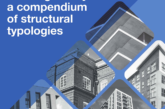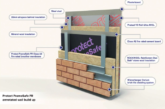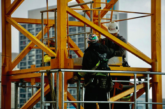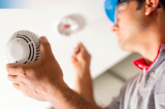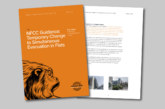After the recent events at Bolton University, where a student accommodation tower went up in flames, Karen Trigg looks into how campus management teams must improve the fire safety and security strategies to keep students safe.
Universities are more aware than ever of their responsibility to keep students safe and secure from all potential fire and security threats. However, after the recent events at Bolton University, where a fire ripped through the Cube building (an accommodation block that is home to more than 200 students) in a matter of minutes, there’s an apparent issue.
Two years after the Grenfell tragedy, this shocking case has once again brought to light the serious issue of fire safety standards in high-rise and low-rise residential buildings, but most recently in our universities. Now, there is mounting pressure on facility managers, security teams and the Government to not only re-evaluate building design, but also fire safety and security protocols.
Whilst the Government is banning combustible materials on new high-rise homes and has committed to replace aluminium composite material (ACM) panels on public sector high-rise residential buildings above 18m in height, there’s still thousands of existing buildings that fall outside the scope of the ban.
Alarmingly, the ban also fails to include 966 existing university and school building projects. What’s more, other areas such as fire door hardware, evacuation and lockdown procedures and also campus security are all crying out for re-evaluation too. So where should facility managers begin?
A worrying situation
A university campus is a complex environment. The size and complexity of the buildings involved presents a challenge in itself. Adding to that, with student numbers rising, it would appear that facility managers have an increasing number of occupants to consider, and for that safety protocols need to improve.
In the last five years, more than one in four universities have received complaints from students, staff or the public regarding fire safety or building evacuation procedures. Pair this with the state of student buildings, which in many cases are years old and not regularly maintained, it’s not surprising that safety standards need improving across the board.
Although facility managers may not have full control over the physical building itself, they do usually have jurisdiction for the interior. With this in mind, it’s crucial for facility managers and security teams to invest in technology and infrastructure, such as door hardware and access control solutions, to maximise security and guarantee student safety and wellbeing.
First steps to fire safety
To guarantee the safety of students, it’s critical for facility managers to ensure that all buildings are well maintained by conducting basic risk assessments. This will involve completing a full evaluation of existing systems, such as fire doors and escape routes — reviewing what could be implemented to enhance facility and occupant safety.
Having a well-fitted fire door is a fundamental element of this. Under the Fire Safety Order, universities and colleges must demonstrate, that in the event of danger, it’s possible for people to evacuate a building as quickly and safely as possible — and the state of fire doors falls within this.
In the circumstance of a fire, to help contain it, it’s vital that fire doors are correctly installed and maintained. This involves making sure that the door hardware (including hinges, handles, door closers, locks and signage) is certified, functional, regularly serviced and maintained.
Educating staff and students on what to look out for when checking fire doors and how to spot any potential damage is also important. Simply putting up fire safety posters and guides can go a long way in helping students avoid easy mistakes (such as propping open fire doors) that could otherwise have detrimental consequences.
Integrated security
From fire detection to cloud-based security systems, there’s a range of innovative technologies that can be integrated into a university campus. Advanced security systems have a huge number of benefits that universities simply cannot ignore. With most universities being designed as ‘open environments’, where people can freely move about, the implementation of an integrated security system is key, especially when aiming to streamline the flow of movement without substituting security.
Today, with cloud-based access control, facility managers can simply issue and retract access credentials meaning entry can be allowed or denied based on person, access point or even time of day. In the event that someone has wrongly gained access to a facility, to preserve student, staff and even equipment safety it’s essential to have an effective lockdown procedure in place.
To avoid any security risks, a lockdown strategy should be based on two critical factors, these being security layers and people and protocols. Regarding layers, every campus is made of the exterior (such as the parking area) and interior (like lecture theatres), therefore the plan must cover this. There must also be trained people on site to make sure protocols are followed in the event of an emergency.
Furthermore, in the possibility of a safe escape, appropriate digital signage, which can switch between a number of escape routes and guide people towards the safest exist must be clearly seen and understood. Not only this, there must be a designated meeting place for students and staff to meet in the event of a fire.
Action is key
As facility managers continue to see the importance of both fire and security elements, it appears more and more educational establishments are now integrating fire and lockdown into one critical incident plan. It’s no doubt that the safety of students should be a constant goal for facility managers and security teams.
Through education, we can improve our investments into fire safety hardware, our understanding of effective lockdown procedures and our integration of increasingly holistic procedures and infrastructures. Only then can we be confident in our efforts to protect students.


